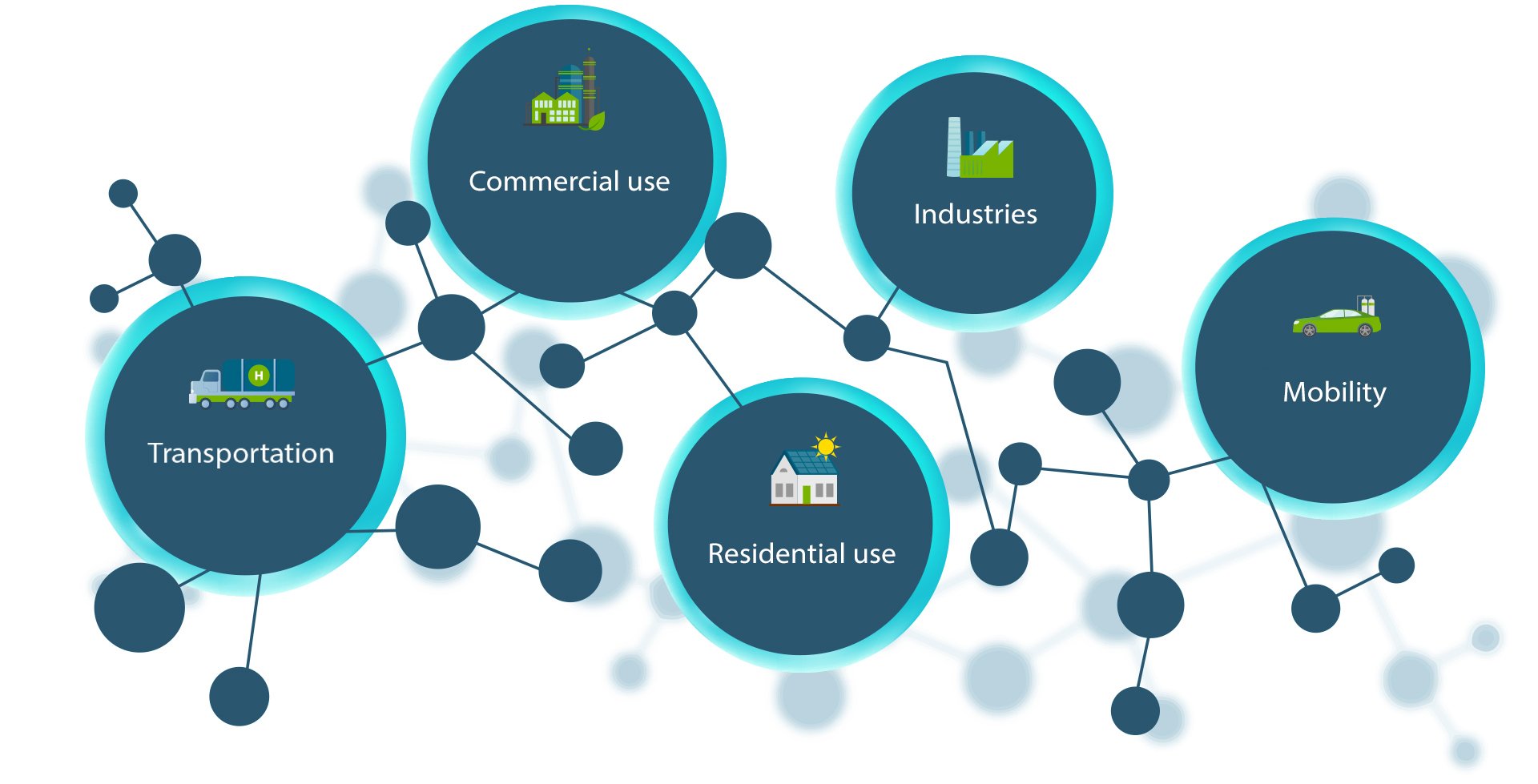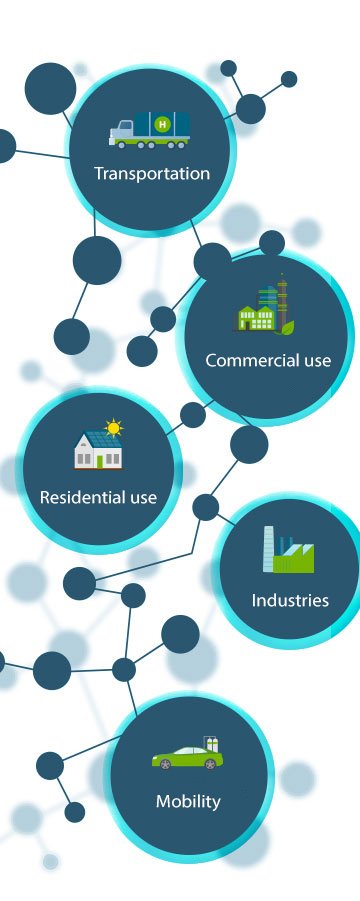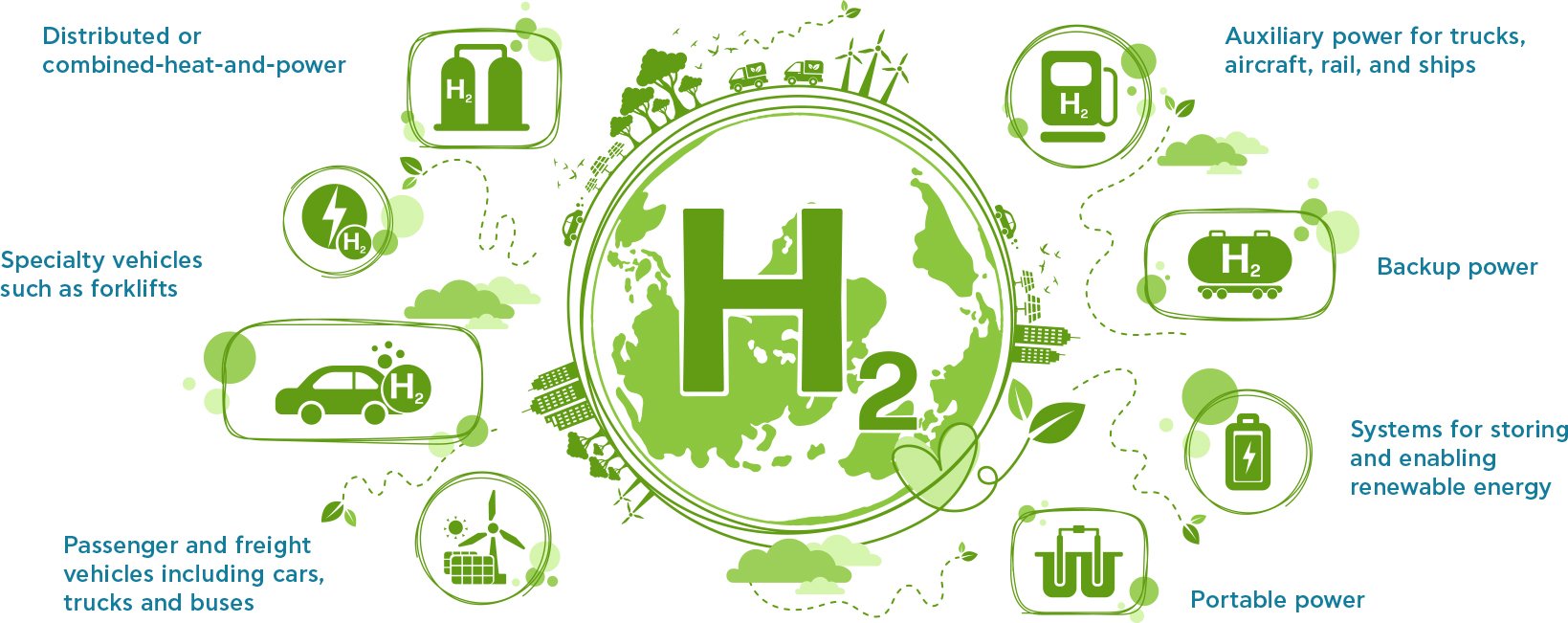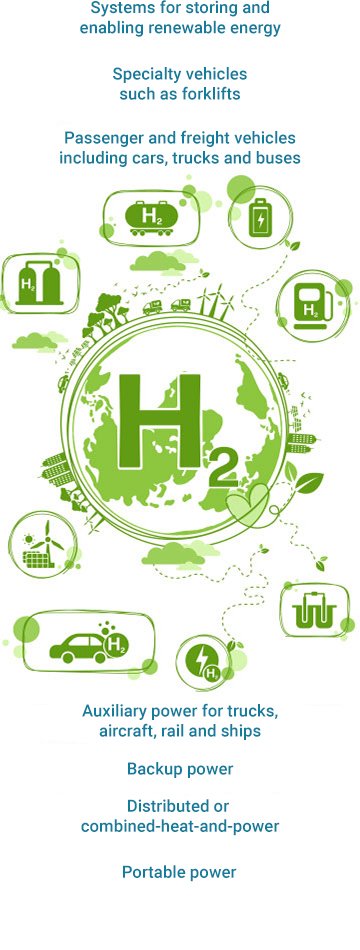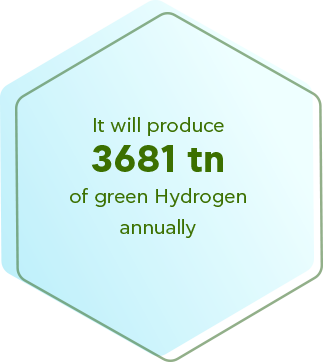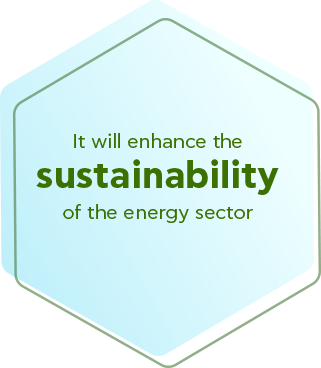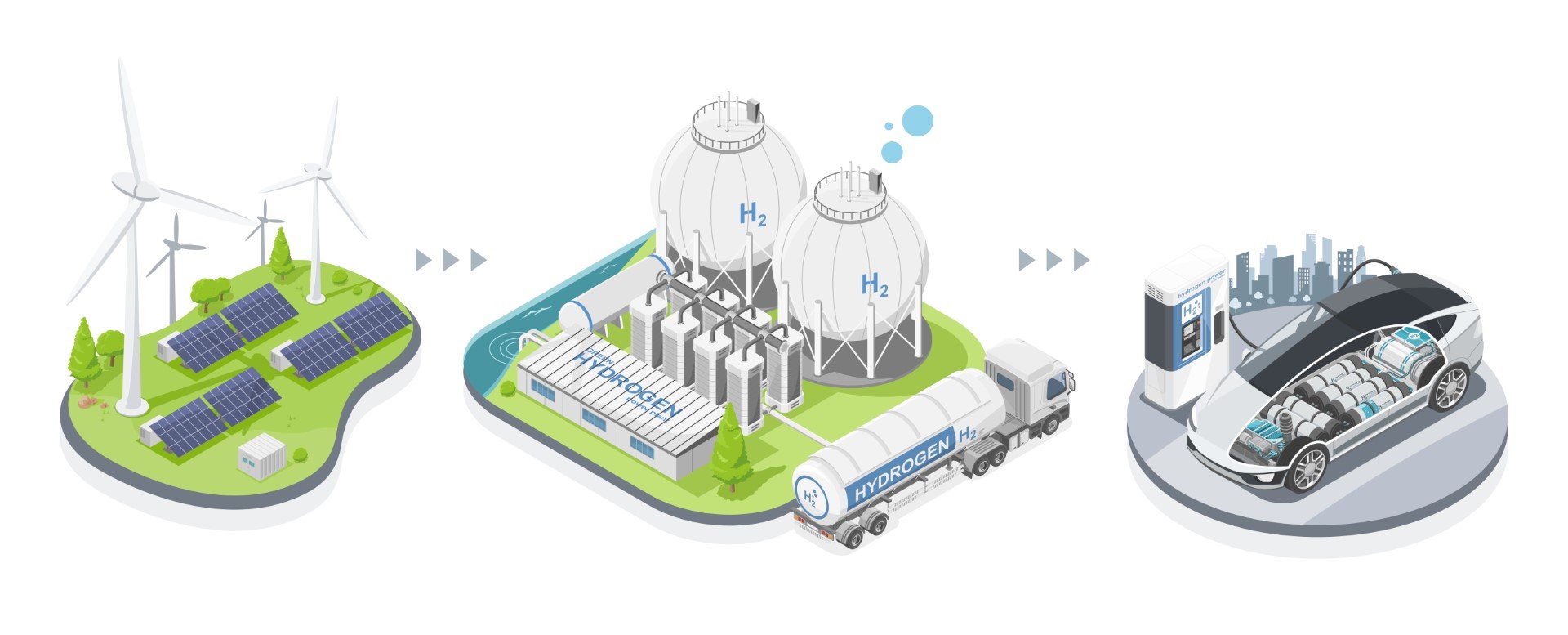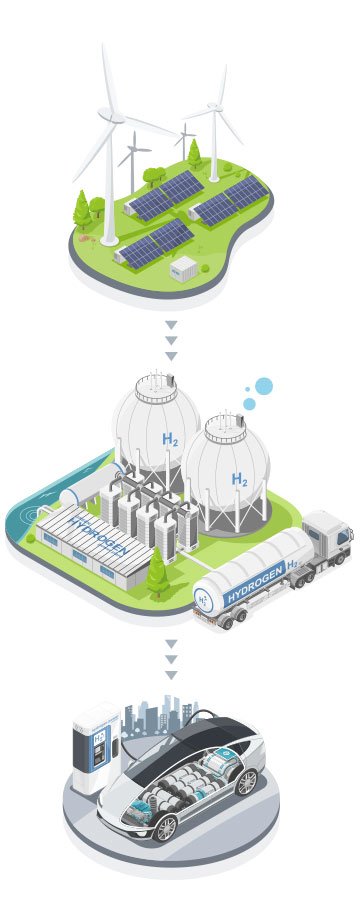We invest in the energy transition of our country through green hydrogen production
Green Hydrogen
A critical factor in the global energy transition.
Hydrogen is the most simple and abundant element on earth
and is produced through its separation from other elements into molecules. For example water can be split into oxygen and hydrogen by electrolysis. When produced with renewable energy sources, then the resulting hydrogen is considered green or renewable hydrogen, it can be stored and yield energy. It usually does not exist by itself in nature and must be produced from compounds that contain it.
Uses of Green Hydrogen
Green hydrogen is a clean fuel and when consumed in a fuel cell it produces only water, electricity and heat. Hydrogen and fuel cells can play an important role in our
national energy strategy with the potential to be used in a wide range of applications, in almost all sectors:
Hydrogen and fuel cells can provide energy for use in diverse applications, including:
Our Projects
Globalsat operates amongst others in the sector of renewable energy and is moving forward with an important investment at the industrial area of Serres, which concerns the production of Green Hydrogen from renewables and certified green energy from the electricity grid. This investment is an important step towards the sustainable development of the region.
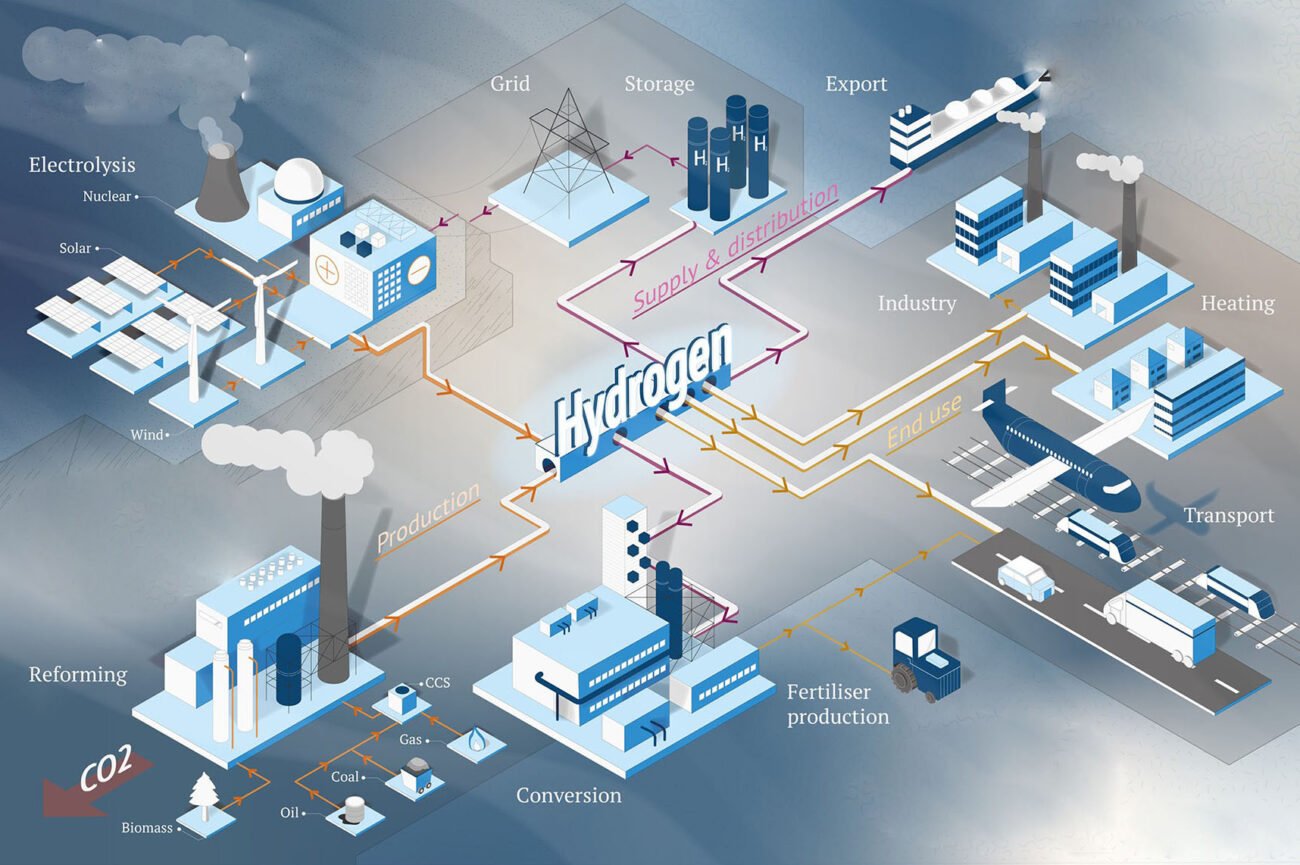
Our Unit
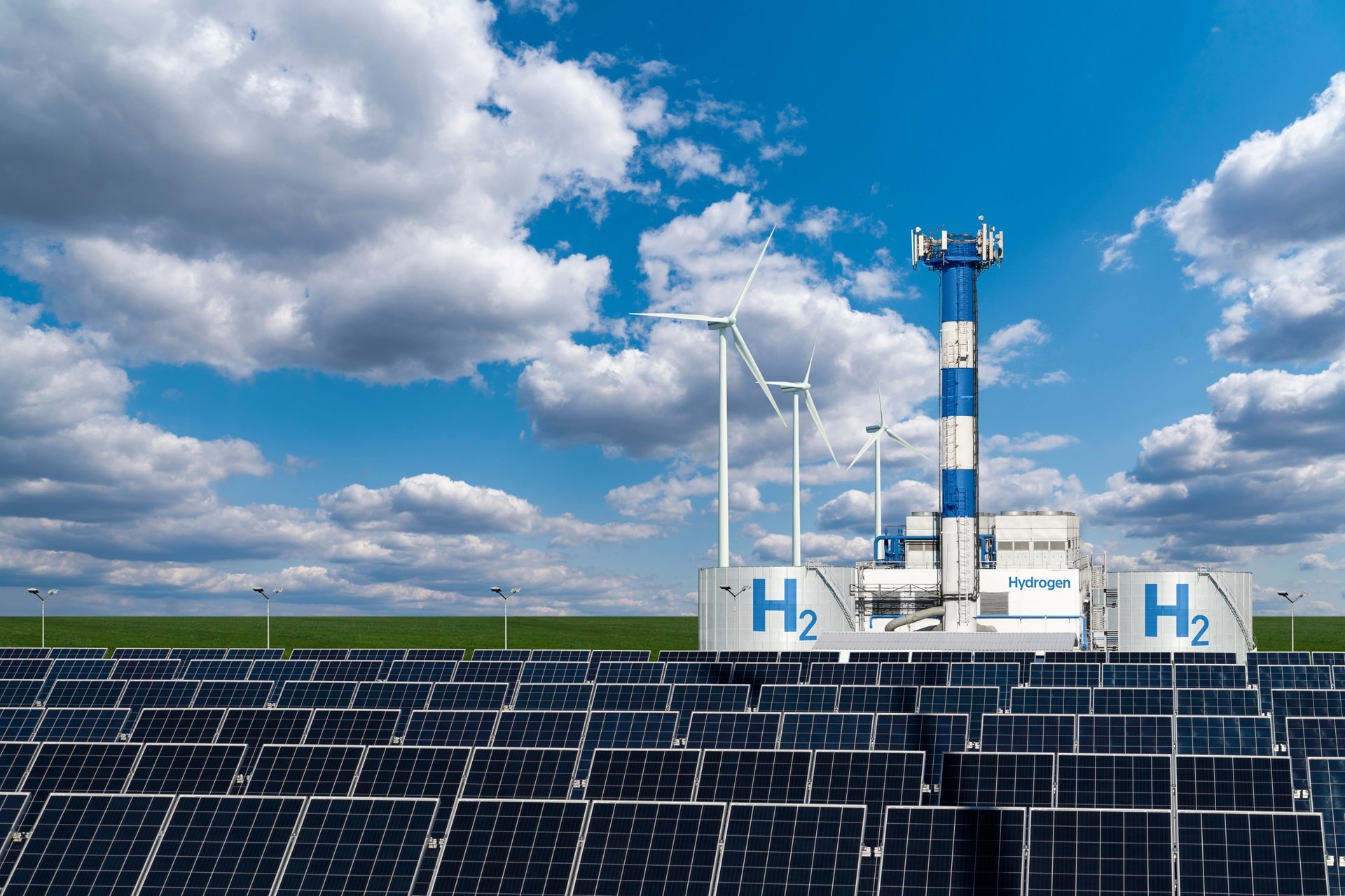

By using cutting edge technologies and production processes,
Globalsat aims to produce Green Hydrogen of the highest purity (grade 5), which can be used at all sectors that are supported by the EU program Repower-EU, such as mobility, transport, shipping, Heavy industries, food, medical sector, energy storage and the production of e-fuels.
The production unit has been designed in such a way that can, in the future, feed a production unit of e-fuels such as e-methanol (3-CH3OH) and e-Ammonia (e-NH4).
Indicative Green Hydrogen Unit
FAQs
The world is starting to fully face the climate emergency. After signing the Paris Agreement in 2016, proclaiming their intention to limit global warming to well below 2°C above pre-industrial levels, the 195 signatory countries now have to act on their commitments. In parallel, more and more businesses are committing to play their role, and citizens and shareholders increasingly demand that companies assume responsibility for their impact on climate change. Acting on this commitment represents a major challenge; decarbonizing an entire energy system is far from simple. According to the Intergovernmental Panel on Climate Change (IPCC), if we wish to keep global warming to well below 2°C above pre-industrial levels, which will already cause major drawbacks for future generations, globally the world will need to cut CO₂ emissions by 25% by 2030 and be net zero by 2070. Within just a few decades, all our energy needs, electricity, industry, transport, buildings and agriculture, will have to come from carbon-free sources. This will require huge changes in little more than a single generation, and will need innovative solutions, technologies and policies.
In order to meet its climate objectives and follow the recommendations of the IPCC,2 the EU is committed to transform its electricity, transport, buildings and industrial sectors in order to render them completely, or almost completely, carbon neutral by 2050. This is a ‘Third Industrial Revolution’, and the hydrogen economy will be an integral part of it, and much sooner than many think today. Hydrogen will play a crucial role in making this fundamental change to our energy systems. It can – and will – constitute a key part of the solution to climate change. Indeed, renewable and nuclear electricity alone will never be able to provide all our energy needs, and hydrogen will need to play a crucial complementary role. Despite regulatory challenges, legal complexity and the current lack of incentives to invest in decarbonized hydrogen without government support, there already exist important opportunities for businesses to reap first-mover advantages and to shape the future of the hydrogen economy. Indeed, although decarbonized hydrogen projects are currently expensive and investment risks are high, closing the gap between cost and revenue is possible by making smart use of government support in the form of public funding and public-private partnerships.
Contact Form
Contact us to jointly look for proposals that meet the needs of your business.


